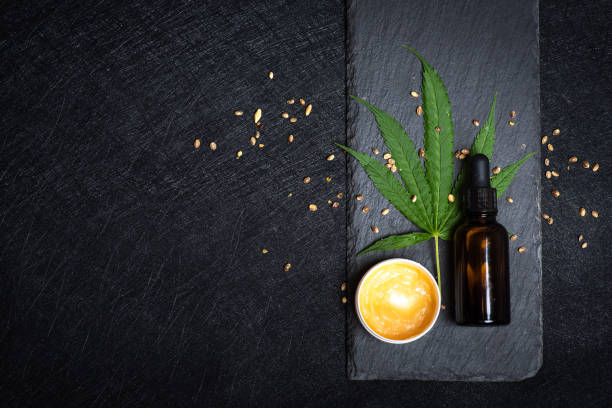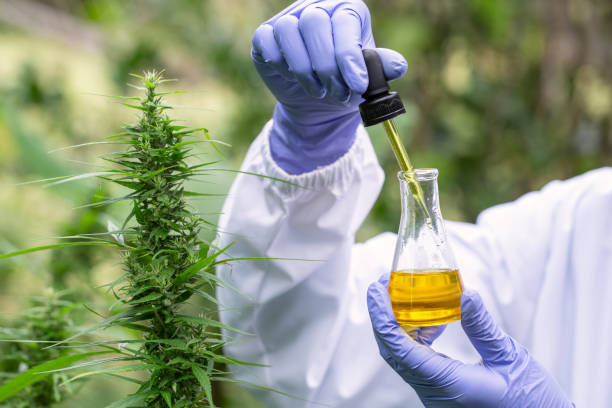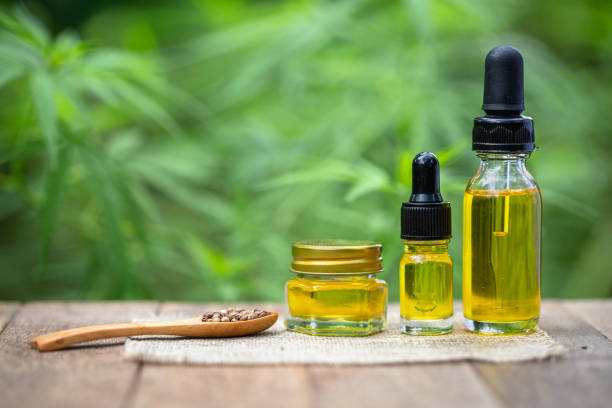Creating Your Own Cannabis Tincture: a Step-by-step Guide
Are you looking for an accessible and effective way to use cannabis? Creating your own tincture might be just the solution you’re searching for. Tinctures are a great option if you want to consume cannabis without smoking it, as they provide all of the benefits with none of the smoke or harshness associated with traditional methods of ingestion. Plus, making your own cannabis tincture is surprisingly easy! In this article, we'll provide a step-by-step guide that will help you make your very own cannabis tincture in no time.
Do you enjoy experimenting in the kitchen? If so, this project may be right up your alley! Making a cannabis tincture is not only simple but also fun - especially when done in collaboration with friends or family. You can even make multiple varieties using different types of herbs and essential oils to create unique flavors and aromas. Whether you're new to making edibles or an experienced chef looking to try something new, creating your own cannabis tincture is sure to be a rewarding experience!
Ready to get started? Let's jump into our step-by-step guide on how to make marijuana tinctures at home! With clear instructions and helpful tips along the way, you'll have everything you need to create a delicious homemade cannabis tincture that packs quite a punch. So what are you waiting for? Read on to learn more about crafting your very own cannabis concoction from scratch!
What is a Cannabis Tincture?
A cannabis tincture is a type of medicine made by extracting the active compounds from dried marijuana flowers and infusing them into an alcohol base. Tinctures are easy to make, cost-effective, and provide precise dosing for those who need it. They can be taken orally (by mouth) or added to food or drinks.
The key to making a good cannabis tincture is using high quality ingredients and taking your time throughout the process. The best way to extract the active compounds from marijuana flowers is through decarboxylation: which involves heating up the flower in order to activate its healing properties. This should always be done before beginning any tincture recipe.
Once you have properly prepared your materials, it's time to make your own cannabis tincture! You'll need a few basic supplies such as glass jars with lids, cheesecloth, strainer or funnel, distilled water, and either vegetable glycerin or grain alcohol for extraction purposes. After gathering all of these items together, follow along with this step-by-step guide for creating an effective cannabis tincture that will last for months on end when stored correctly.

Supplies Needed to Create Your Own Cannabis Tincture
Now that you have the basics about cannabis tinctures down, it's time to get started on making your own. Before beginning any recipe, gather up all of the supplies needed for extraction and storage. Here is a list of essential items:
-Glass jars with lids (1qt/liter) -Cheesecloth or muslin fabric -Strainer or funnel -Distilled water -Vegetable glycerin or grain alcohol such as Everclear -Dried marijuana flowers
Once you have collected all of these materials, you are ready to start creating your very own cannabis tincture! To begin, prepare the dried flower by decarboxylating in an oven at 240°F (115°C). This process activates the healing compounds within the plant material so they can be extracted properly during infusion. After this step has been completed, place one ounce (28g) of prepared flower into each glass jar and fill them two thirds full with vegetable glycerin or grain alcohol. Make sure not to overfill – there should still be room left for stirring and shaking later on in the process. Seal the lid tightly onto each jar before moving on to infusing.
Safety Tips for Making Cannabis Tinctures
It's important to keep safety in mind when making your own cannabis tincture. As with any at-home extraction process, there are certain precautions that need to be taken for a safe and successful outcome. Here are some key tips to remember:
First, make sure you only use food grade vegetable glycerin or grain alcohol for the infusion process, as these solvents will not harm the plant material. Also, never attempt to infuse cannabis in an open flame – this is extremely dangerous and can cause serious injury! Finally, always work in a well-ventilated area and wear gloves when handling extractions. This helps protect against skin irritations caused by exposure to oils and terpenes present within the flower matter.
By following these simple safety guidelines while creating your very own cannabis tinctures, you can ensure that both yourself and the final product remain safe during every step of the extraction process.
Choosing the Right Cannabis Strain for Your Tincture
Now that you understand the safety guidelines for making cannabis tinctures, it's important to consider which strain of cannabis is best suited for this type of extraction. While some may believe that any kind of flower will do, there are certain strains that have proven more successful when creating a medicinal tincture.
To start off your search, look for a strain high in cannabidiol (CBD). This cannabinoid has been studied extensively and found to be particularly effective at alleviating anxiety, depression, chronic pain, inflammation and other ailments. Furthermore, CBD-dominant strains tend to contain little or no tetrahydrocannabinol (THC), meaning they won’t produce psychoactive effects like those associated with “getting high".
When selecting the right strain for your tincture, also take into account the terpene profile – these aromatic compounds provide each strain its own unique flavor and aroma. Certain combinations of cannabinoids and terpenes can work synergistically together to create an entourage effect – so experiment with different varieties until you find one that suits your needs!
Decarb and Infuse Process
Now that you’ve chosen the right cannabis strain for your tincture, it’s time to begin the decarb and infusion process. Decarbing or “decarboxylation” is an essential step in making a cannabis-infused tincture – this chemical reaction activates THC and other cannabinoids so they can be properly absorbed by the body.
The best way to achieve optimal decarb results is by using an oven set at 215°F (102°C). Place ground flower on a baking sheet lined with parchment paper and place in preheated oven for 30 minutes, stirring every 10 minutes. Once done, let cool before adding it to your preferred carrier oil.
Once combined, store the mixture in a dark glass jar for four weeks, shaking the jar twice daily. After allowing the mixture enough time to infuse its medicinal properties into the oil, use cheesecloth or another straining method of choice to separate plant matter from liquid extract– now you have your very own CBD-rich cannabis tincture!

Straining and Filtering Your Tincture
Now that you have your cannabis-infused oil, it’s time to strain and filter the tincture. This step is important for removing any remaining plant matter from the mixture before consumption. Start by pouring the mixture through a cheesecloth into another glass jar – this will help remove larger particles of plant material.
For an even purer tincture, use multiple layers of cheesecloth or a fine mesh strainer to further separate out small pieces of flower. If desired, place the strained solution in a Mason jar and put it in the fridge overnight so that sediment can settle at the bottom and be filtered away with ease.
Once done filtering, you should now have a clean liquid extract ready to enjoy! Be sure to label your finished product clearly; store it safely in a cool, dark place away from direct sunlight or heat sources where it can last up to two years.
How to Store Your Finished Cannabis Tincture
Now that you have a finished cannabis tincture, it's important to store it correctly so that it will last as long as possible. The first step is to ensure your extract is tightly sealed; this can be easily accomplished by using an airtight glass jar or dropper bottle. It’s also best practice to label the container with its contents and date of preparation so that you can keep track of how old the tincture is over time.
Second, make sure the tincture is stored in a cool, dark place away from direct sunlight or heat sources. This helps preserve the quality and potency of the extract and prevent any degradation of cannabinoids due to light exposure. Additionally, keeping temperatures low prevents oxidation which could affect flavor, color, and smell.
Finally, if stored properly in a closed container at room temperature out of direct sunlight, your cannabis tincture should remain stable for up to two years! With good care and storage practices, you can enjoy this powerful herbal remedy for months or even years without worrying about spoilage or loss of potency.
Dosing Guidelines for Using Cannabis Tinctures
Now that you know how to store your tincture, it's time to learn about the proper way to use and dose cannabis tinctures. It is important to understand that, as with any other form of medicinal cannabis, dosing should always start low and increase incrementally until desired effects are achieved. The following guidelines will provide a good starting point for using cannabis tinctures safely and effectively.
When it comes to dosage, the general rule is “start low and go slow”; meaning begin with just 1-2 drops at a time, gradually increasing the amount over several days or weeks until desired results are reached. Cannabis tinctures can be taken directly under the tongue (sublingually) or added into food or beverages for ingestion. When taking sublingually, hold each drop under the tongue for 60 seconds before swallowing in order to maximize absorption of cannabinoids into the bloodstream through oral mucosa membranes.
It's important to remember everyone has different tolerances when it comes to marijuana products so there is no one size fits all approach when determining an ideal dose - rather it requires some trial and error on your part. Before making adjustments however, give your body at least 2-3 hours between doses so that you can properly assess its effect before adjusting if needed. With practice and patience you'll soon find the perfect balance of CBD:THC ratio tailored specifically towards your individual needs!
Different Uses for Cannabis Tinctures
Cannabis tinctures offer an incredibly versatile and discreet way to consume cannabis. Not only can they be taken sublingually, but they can also be added directly into food or beverages for a more convenient consumption method. This makes them an ideal choice for those looking to explore the many potential benefits of medical marijuana without having to smoke it or vape it.
Another great use for cannabis tinctures is topically applying them onto skin for localized pain relief. It's important to note however that some formulas may contain high levels of THC which could cause psychoactive effects if applied too liberally - so always start with just a few drops and increase gradually until you find your desired effect! Additionally, this form of tincture has been found useful in treating certain conditions such as eczema, psoriasis, muscle soreness and even insect bites when used regularly over time.
No matter what your reasons are for using cannabis tinctures, experimenting with different methods of administration will help you get the most out of each dose while still enjoying all the health benefits associated with this incredible plant-based medicine. With careful experimentation and precise dosing, you'll soon find the perfect balance tailored specifically towards your individual needs!
Potential Side Effects of Using Cannabis Tinctures
Although cannabis tinctures offer a range of health benefits, there are some potential side effects that you should be aware of before using them. Generally speaking, the most common side effects associated with cannabis tinctures include dry mouth, nausea, dizziness and drowsiness. It’s also important to note that consuming too much THC can lead to feelings of paranoia or anxiety in some users - so it's always best to start off slow and increase your dose slowly over time until you find what works for you!
Here is a list of other potential side effects you should consider when using marijuana-infused tincture:
• Increased heart rate
• Bloodshot eyes
• Short term memory loss
• Decreased coordination
• Impaired judgment
It’s always important to read up on any possible risks or contraindications associated with cannabis use before starting. Always consult with your doctor or healthcare provider if you have questions about taking cannabis products, as they will be able to provide more tailored advice based on your individual medical history and condition. By being mindful of these potential risks and following proper guidelines for safe consumption, you'll be sure to get the most out of each dosage without putting yourself at risk for any adverse reactions.
Conclusion
In conclusion, cannabis tinctures are a simple and straightforward way to enjoy the therapeutic benefits of marijuana without having to smoke it. With a few supplies and some careful planning you can craft your own potent tincture at home in no time. Whether you’re looking for relief from chronic pain or just want an easy way to dose out THC discretely, creating your own cannabis tincture is well within reach.
By following these steps and guidelines, you will be well on your way to taking advantage of the “green gold rush” that many people have already discovered with their own homemade cannabis tinctures. Like any medicine though, it's important to remember that dosing cautiously is key. As they say: less is more! Taking small doses until you find your sweet spot allows you to discover all the potential benefits of this powerful plant-based remedy without overdoing it - like slowly savoring a fine wine rather than gulping down a shot glass full.
Ultimately, crafting one’s own cannabis tincture may seem intimidating at first but with a bit of patience and know how anyone can create a safe and effective remedy tailored specifically for them! This DIY approach gives users control over what goes into their medicine while also allowing them explore the depth and breadth of its healing capabilities.
If you're interested to have more knowledge about this topic, feel free check this blog post from The Bud Depot.

